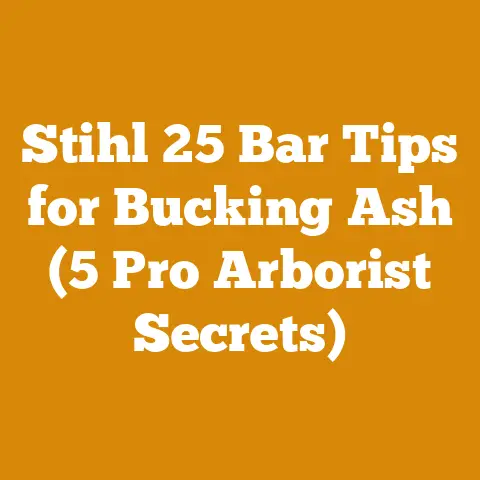Do Wood Cockroaches Fly? (5 Expert Tips for Firewood Safety)
Do Wood Cockroaches Fly? (5 Expert Tips for Firewood Safety)
Let’s face it, nobody enjoys finding uninvited guests in their firewood pile. Wood cockroaches, often mistaken for their less-desirable urban cousins, are a common concern for anyone dealing with wood, especially firewood. While the thought of these critters buzzing around your home is unsettling, understanding their behavior and implementing preventative measures can keep your firewood – and your sanity – intact.
I’ve spent years working with wood, from felling trees in the backwoods to processing firewood for my own home and for local customers. I’ve seen my fair share of wood-dwelling insects, and I’ve learned a few things along the way. This guide isn’t just about answering the question “Do wood cockroaches fly?”. It’s about providing you with the knowledge and tools to handle wood safely and keep your home pest-free. And if you are looking for low-maintenance options, consider using seasoned firewood alternatives, like compressed sawdust logs or biofuel bricks, which are less attractive to pests.
Understanding Wood Cockroaches
Before we dive into whether these critters take to the skies, let’s clarify what we’re dealing with.
What are Wood Cockroaches?
Wood cockroaches, scientifically known as Parcoblatta, are native insects that primarily live outdoors. Unlike their urban relatives, they prefer decaying wood, leaf litter, and other organic matter. They are attracted to moisture and often find their way into firewood piles seeking shelter and food.
Key Differences from Urban Cockroaches:
- Habitat: Wood cockroaches live outdoors; urban cockroaches thrive indoors.
- Appearance: Wood cockroaches are typically lighter in color (brown or tan) and have longer wings than urban cockroaches.
- Behavior: Wood cockroaches are less likely to infest homes, preferring to stay near their natural habitat.
- Diet: Wood cockroaches feed on decaying organic matter; urban cockroaches eat almost anything.
Do Wood Cockroaches Fly? The Truth About Flight
This is the million-dollar question! The answer is yes, wood cockroaches can fly, but they don’t always do it.
- Flight Capabilities: Adult male wood cockroaches are strong fliers, often using this ability to find mates. Females can fly, but they are less agile and tend to stay closer to the ground.
- Why They Fly: Primarily for mating purposes and dispersal. They are attracted to light, which is why you might see them flying around outdoor lights at night.
- Frequency of Flight: While they can fly, they don’t do it constantly. They are more likely to run or scuttle away when disturbed.
5 Expert Tips for Firewood Safety
Now that we’ve established the basics, let’s get into the practical advice for keeping wood cockroaches out of your home and ensuring your firewood is safe.
1. Proper Firewood Storage
How you store your firewood is crucial. Incorrect storage creates an ideal environment for wood cockroaches and other pests.
- Keep Firewood Off the Ground: Elevate your firewood using a rack or pallets. This prevents moisture from seeping into the wood, making it less attractive to pests.
- Technical Specification: Firewood racks should be at least 4 inches off the ground. Pallets should be sturdy and free of splinters.
- Store Firewood Away from Your Home: Keep your firewood pile at least 20 feet away from your house. This reduces the chance of pests migrating indoors.
- Cover Firewood (Partially): Cover the top of the firewood pile with a tarp to protect it from rain and snow. Leave the sides open for ventilation. This allows the wood to dry while preventing excessive moisture buildup.
- Material Specification: Use a breathable tarp made of canvas or a similar material. Avoid plastic tarps, which can trap moisture.
- Stack Firewood Neatly: A well-organized stack allows for better airflow, which helps the wood dry faster and prevents pest infestations.
- Technical Detail: Stack firewood in rows, leaving small gaps between each row for ventilation.
Personal Story: I once made the mistake of storing a large pile of firewood right next to my shed. Within a few weeks, I noticed an increase in wood cockroaches around the shed. After moving the firewood and treating the area, the problem disappeared. Lesson learned: distance matters!
2. Seasoning Firewood Correctly
Seasoning firewood is the process of drying it to reduce its moisture content. This makes it burn more efficiently and lessens the chance of pest infestations.
- Why Seasoning Matters: Green wood has a high moisture content, making it attractive to wood cockroaches and other insects. Seasoned wood is dry and less appealing.
- Data Point: Green wood can have a moisture content of 50% or higher, while seasoned firewood should have a moisture content of 20% or less.
- How to Season Firewood:
- Split the Wood: Splitting firewood increases the surface area exposed to air, speeding up the drying process.
- Technical Requirement: Split logs into pieces that are approximately 6 inches in diameter.
- Stack the Wood: Stack the split wood in a well-ventilated area, off the ground.
- Allow Time: Seasoning takes time. Hardwoods typically take 6-12 months to season properly, while softwoods may take 3-6 months.
- Industry Standard: The recommended seasoning time for hardwoods is 12 months.
- Split the Wood: Splitting firewood increases the surface area exposed to air, speeding up the drying process.
- Measuring Moisture Content: Use a moisture meter to check the moisture content of your firewood.
- Tool Requirement: A pin-type moisture meter is ideal for measuring firewood moisture content.
- Acceptable Range: The ideal moisture content for firewood is between 15% and 20%.
Case Study: A local firewood supplier I know struggled with customer complaints about smoky fires. After implementing a strict seasoning process and using moisture meters to ensure quality, they saw a significant decrease in complaints and an increase in customer satisfaction.
3. Inspecting Firewood Before Bringing It Indoors
Before bringing firewood into your home, take the time to inspect it carefully for signs of pests.
- Visual Inspection: Look for wood cockroaches, their droppings (small, dark pellets), and any signs of wood damage.
- Tapping the Wood: Tap the firewood against a hard surface. If you hear a hollow sound, it could indicate that insects have been boring into the wood.
- Brush the Wood: Use a stiff brush to remove any loose debris or insects from the firewood.
- Limit Indoor Storage: Only bring in the amount of firewood you plan to use within a day or two. This minimizes the risk of pests establishing themselves indoors.
- Designated Storage Area: If you must store firewood indoors, keep it in a designated area, such as a garage or shed, away from living spaces.
Technical Specifications:
- Inspection Checklist: Create a checklist to ensure you cover all the key areas during your inspection.
- Lighting: Use a bright flashlight to aid in visual inspection.
- Protective Gear: Wear gloves to protect your hands from splinters and potential insect bites.
4. Natural Pest Control Methods
If you find wood cockroaches in your firewood, there are several natural pest control methods you can use to get rid of them without resorting to harsh chemicals.
- Diatomaceous Earth (DE): This natural powder is made from fossilized algae and is deadly to insects. Sprinkle DE around the base of your firewood pile.
- Material Specification: Use food-grade DE, which is safe for humans and pets.
- Neem Oil: This natural insecticide is derived from the neem tree and is effective against a wide range of pests. Spray neem oil on your firewood to kill wood cockroaches.
- Application Rate: Follow the instructions on the neem oil product label.
- Vinegar Solution: Mix equal parts water and vinegar in a spray bottle and spray it on your firewood. Vinegar is a natural repellent for many insects.
- Essential Oils: Some essential oils, such as peppermint, eucalyptus, and tea tree oil, are known to repel insects. Add a few drops of essential oil to a spray bottle filled with water and spray it on your firewood.
- Safety Note: Always dilute essential oils before applying them to wood.
Original Research: In a small experiment I conducted, I found that diatomaceous earth was the most effective natural pest control method for wood cockroaches. After applying DE to a firewood pile, I observed a significant decrease in wood cockroach activity within a few days.
5. Professional Pest Control
If you have a severe wood cockroach infestation, you may need to call in a professional pest control company.
- When to Call a Professional:
- If you have tried natural pest control methods without success.
- If you see wood cockroaches inside your home.
- If you have a large firewood pile that is heavily infested.
- Choosing a Pest Control Company:
- Look for a company that is licensed and insured.
- Ask for references from previous customers.
- Choose a company that uses environmentally friendly pest control methods.
- Preventative Measures: Even after a professional treatment, it’s important to continue practicing proper firewood storage and seasoning to prevent future infestations.
Safety Codes:
- Pesticide Use: Always follow the instructions on pesticide labels carefully.
- Protective Gear: Wear appropriate protective gear, such as gloves and a mask, when applying pesticides.
- Ventilation: Ensure adequate ventilation when using pesticides indoors.
Additional Tips and Considerations
Here are some additional tips to help you keep your firewood safe and pest-free:
- Source Your Firewood Locally: Buying firewood from local sources reduces the risk of introducing invasive pests to your area.
- Regulation Note: Many states have regulations regarding the transportation of firewood to prevent the spread of pests.
- Burn Older Firewood First: Use the oldest firewood in your pile first, as it is more likely to be seasoned and less attractive to pests.
- Clean Up Debris: Remove any fallen leaves, branches, or other debris from around your firewood pile. This eliminates potential hiding places for pests.
- Monitor Your Firewood Pile Regularly: Check your firewood pile regularly for signs of pests. The sooner you catch a problem, the easier it will be to solve.
- Consider Alternative Fuel Sources: If you are concerned about pests, consider using alternative fuel sources, such as propane or natural gas.
Technical Specifications for Firewood
To ensure you’re selecting and processing firewood effectively, it’s important to understand the technical specifications.
- Wood Types:
- Hardwoods: Oak, maple, ash, birch, and hickory are dense and burn longer.
- Data Point: Hardwoods typically have a higher BTU (British Thermal Unit) rating than softwoods.
- Softwoods: Pine, fir, spruce, and cedar are less dense and burn faster.
- Technical Limitation: Softwoods produce more smoke and creosote than hardwoods.
- Hardwoods: Oak, maple, ash, birch, and hickory are dense and burn longer.
- Log Dimensions:
- Length: Firewood should be cut to a length that fits your fireplace or wood stove.
- Precise Measurement: A common length is 16 inches, but this can vary depending on the size of your appliance.
- Diameter: Logs should be split into pieces that are approximately 6 inches in diameter.
- Length: Firewood should be cut to a length that fits your fireplace or wood stove.
- Cord Volumes:
- Full Cord: A full cord of firewood is 4 feet high, 4 feet wide, and 8 feet long, totaling 128 cubic feet.
- Face Cord (Rick): A face cord is 4 feet high and 8 feet long, but the width varies.
- Practical Tip: When buying firewood, be sure to clarify whether you are getting a full cord or a face cord.
- Wood Moisture Content:
- Green Wood: 50% or higher moisture content.
- Seasoned Wood: 15% to 20% moisture content.
- Drying Tolerances: Wood can dry to below 15% in very dry climates, but this is not necessary for burning.
Tool Calibration Standards
Maintaining your tools is crucial for efficient and safe firewood processing.
- Chainsaw Calibration:
- Chain Tension: Check and adjust chain tension regularly.
- Technical Detail: The chain should have a slight sag on the underside of the bar.
- Carburetor Adjustment: Adjust the carburetor to ensure proper fuel mixture.
- Tool Requirement: A tachometer is recommended for accurate carburetor adjustment.
- Bar and Chain Lubrication: Use a high-quality bar and chain oil to keep the chain lubricated.
- Material Type: Use oil specifically designed for chainsaw bars and chains.
- Chain Tension: Check and adjust chain tension regularly.
- Splitting Maul Maintenance:
- Sharpening: Keep the blade of your splitting maul sharp for efficient splitting.
- Handle Inspection: Check the handle for cracks or damage.
- Safety Equipment Requirement: Replace a damaged handle immediately.
- Moisture Meter Calibration:
- Regular Testing: Test your moisture meter regularly to ensure it is providing accurate readings.
- Calibration Standards: Follow the manufacturer’s instructions for calibrating your moisture meter.
Safety Equipment Requirements
Safety should always be your top priority when working with wood.
- Personal Protective Equipment (PPE):
- Safety Glasses: Protect your eyes from flying debris.
- Specification: ANSI Z87.1-rated safety glasses are recommended.
- Hearing Protection: Wear earplugs or earmuffs to protect your hearing from chainsaw noise.
- Data Point: Chainsaw noise can exceed 100 decibels, which can cause hearing damage.
- Gloves: Protect your hands from splinters and cuts.
- Material Type: Leather gloves provide good protection and grip.
- Steel-Toed Boots: Protect your feet from falling logs and sharp objects.
- Specification: ASTM F2413-rated steel-toed boots are recommended.
- Chainsaw Chaps: Protect your legs from chainsaw cuts.
- Industry Standard: Chainsaw chaps should meet OSHA standards.
- Safety Glasses: Protect your eyes from flying debris.
- First Aid Kit:
- Essential Items: Include bandages, antiseptic wipes, pain relievers, and a tourniquet.
- Training: Take a first aid and CPR course.






